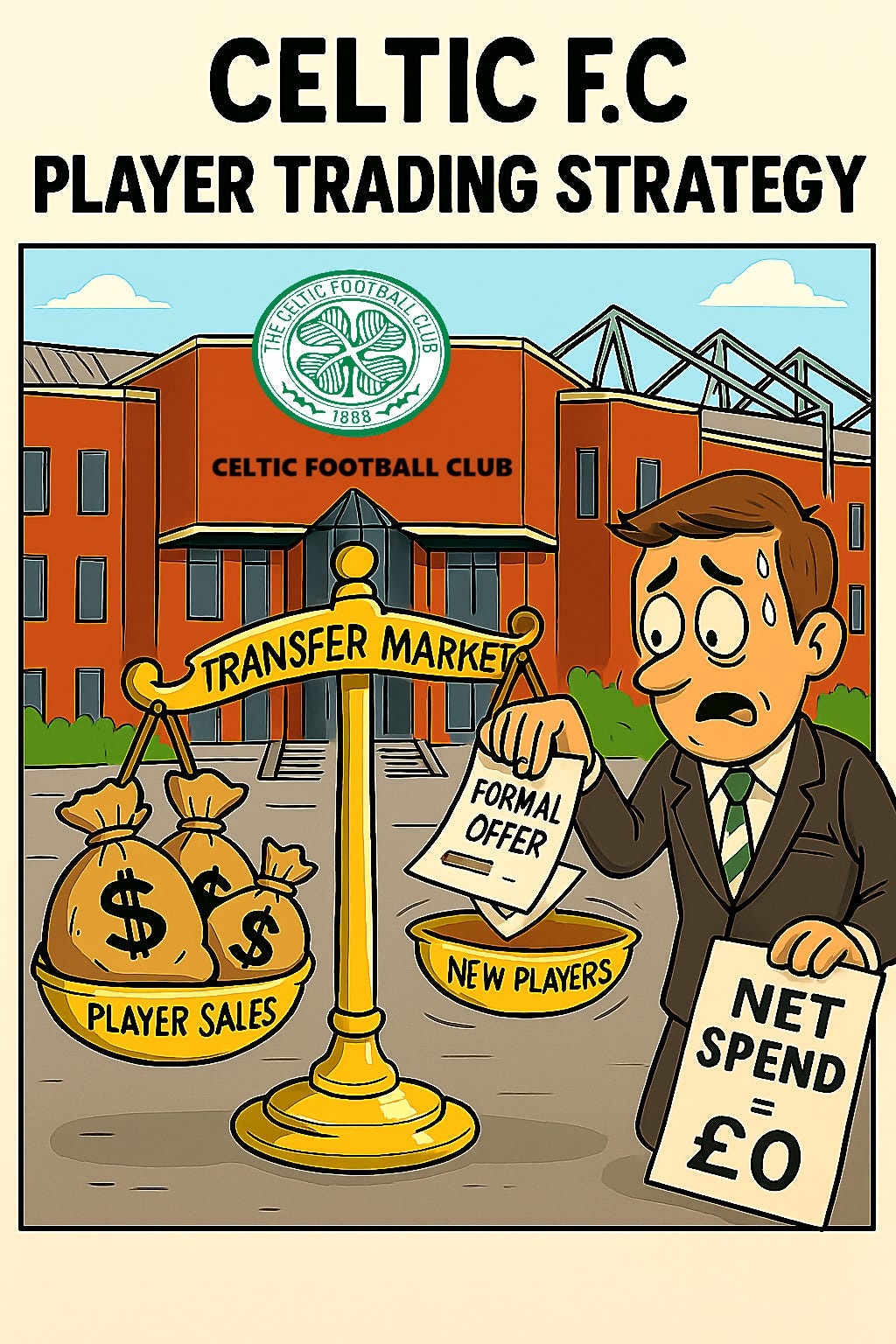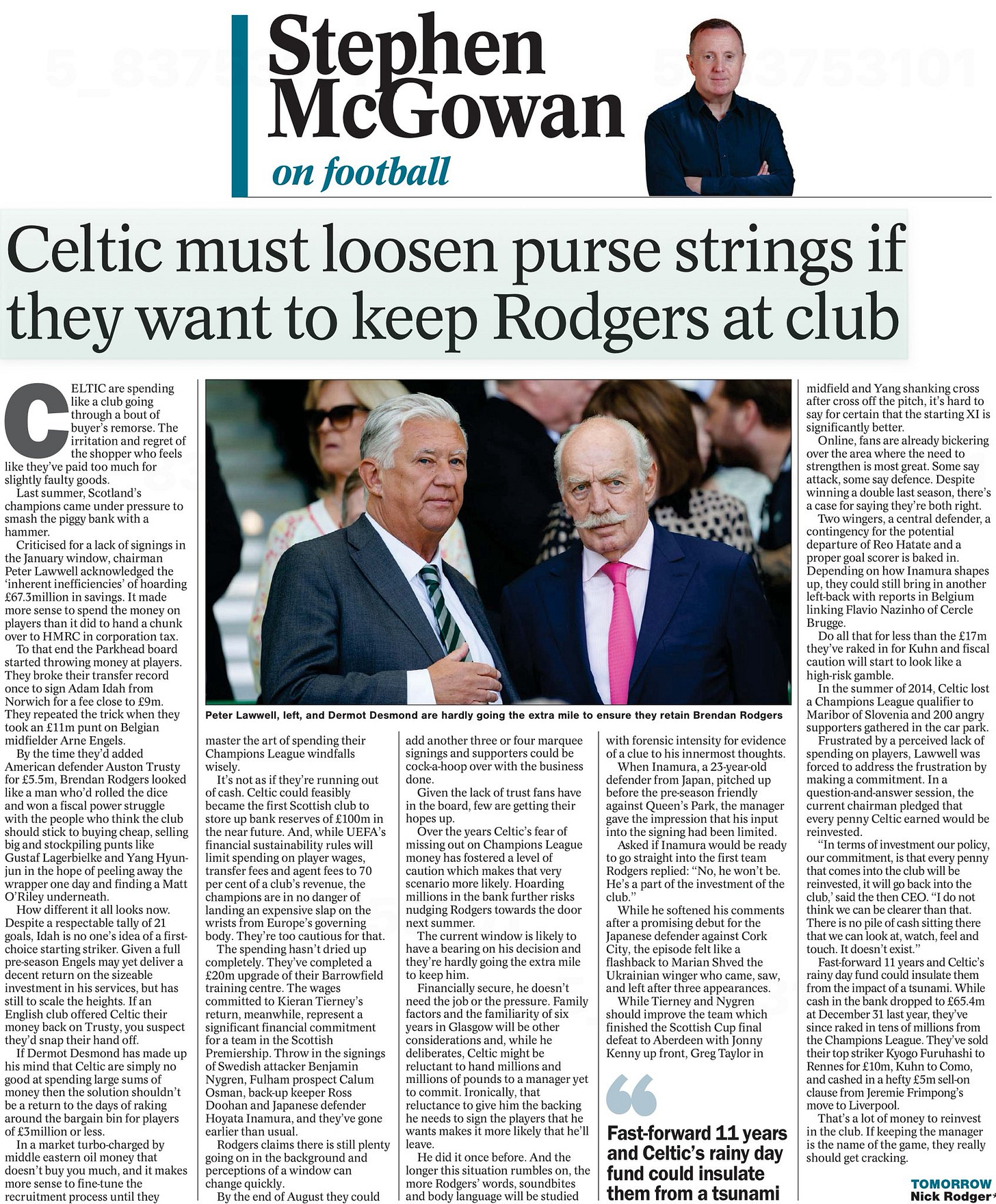Celtic's Player Trading Strategy Examined
Deep dive into the figures behind Celtic's recent history in the transfer market
After Celtic’s failed bid to complete 10-in-a-row in season 2020/2021, when instead Rangers completed an invincible league season, conceding a British record low of 13 league goals in the process, something had to change at Celtic Park. Out of nowhere, there appeared to be a monumental gap between them and Rangers, that the fans simply would not tolerate.
After months of pursuing the then out of work former Bournemouth manager Eddie Howe, Celtic eventually took what was viewed at the time as a ‘gamble’ on a largely unknown quantity in Ange Postecoglou, joining Celtic from Yokohama F. Marinos.
Of course, the ‘gamble’ was a monumental success in Glasgow, as Ange steamrolled his way to five trophies in two years, before leaving for Tottenham Hotspur where he delivered Spurs’ first trophy in 17 years - the Europa League.
Stephen McGowan speculated in The Herald last week that Rodgers may leave Celtic when his contract expires at the end of this season, primarily due to lack of spending by the Celtic board. McGowan’s column piqued my interest in what is a growing sense of disquiet within some sections of the Celtic support. There’s now at least a smattering of fans worried the hierarchy may not be appropriately backing Rodgers in the transfer market, preventing the club from kicking on to the next level. But how exactly has Celtic’s player trading evolved over the last five years? This article will discuss in detail:
The Charlie Nicholas window
“Laxalt isn’t an inspirational signing”
Neil Lennon and his brave face
The Spend since 2021
Net spend under Ange
Net spend under Rodgers
Net spend since 2012
The Players Traded
Every in and out since 2012
The Contingent fees
Merry Christmas, Virgil van Dijk
The Celtic Strategy?
“It depends on your ambition”
“We still need reinforcements, that’s evident”
Keep reading with a 7-day free trial
Subscribe to Scotland's Coefficient to keep reading this post and get 7 days of free access to the full post archives.




